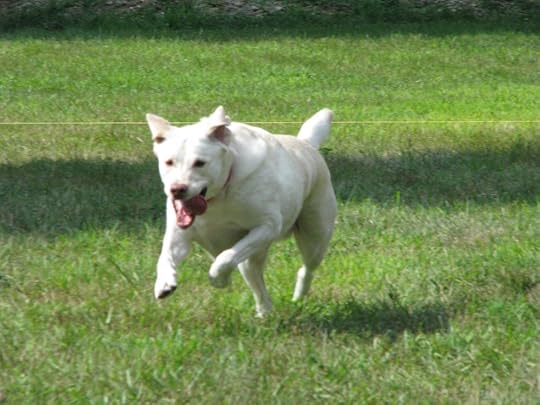Connie Bombaci's Blog, page 7
January 2, 2019
Deaf Dog to the Rescue
The love between a dog and his human has no boundaries or limitations. When I see, hear about, or read an amazing story of our deaf pups that is inspiring, I am compelled to share it with as many others that I possibly can. Like the message in our book, Hogan’s Hope, my prayer is that by doing this, the myths and barriers will be broken through and discarded. This story is copied from the wonderful writing of Katherine Rodriguez for BREITBART news.
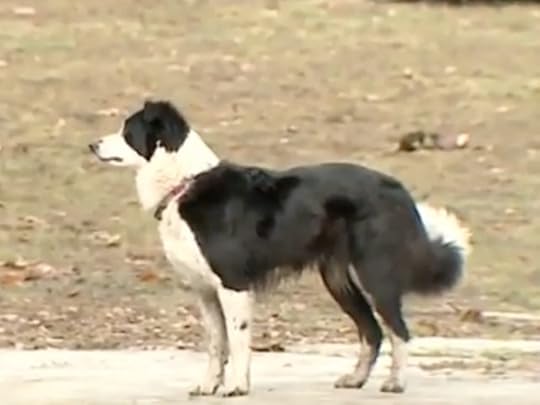
by Katherine Rodriguez December 30, 2018
Deaf Dog Hailed a Hero for Saving Couple from House FireA deaf dog is being hailed as a hero for saving the lives of a couple who escaped a fire that broke out in their New Hampshire home on Saturday.
The Barnstead Fire Department told WMUR that the home burst into flames around 4 a.m. Saturday. Once fire crews arrived at the scene, the flames fully encased the home and the surrounding structures.
Fire officials said none of the smoke detectors in the house were working, but the deaf dog alerted the house residents to the fire in time for them to escape.
“Without the working smoke detectors and without that dog, it is unlikely they would have made it out of the building,” said Deputy Fire Chief John Drew.
Firefighters spent an hour-and-a-half putting out the two-alarm fire. Drew added that two of the firefighters on scene went to the hospital for treatment and were later released.
Even though the couple and the dog survived the fire, several other pets did not, and the house was completely destroyed.
Firefighters are currently investigating the cause of the inferno.
Other deaf dogs have proven to their owners that they really are man’s best friend by rescuing humans in their time of need.
In April, a deaf and blind dog in Australia remained by a three-year-old girl’s side after she wandered away from home. The dog stayed with her until she was found.
Courtesy of BREITBART Katherine Rodiguez
December 20, 2018
Holiday Safety Thought #2
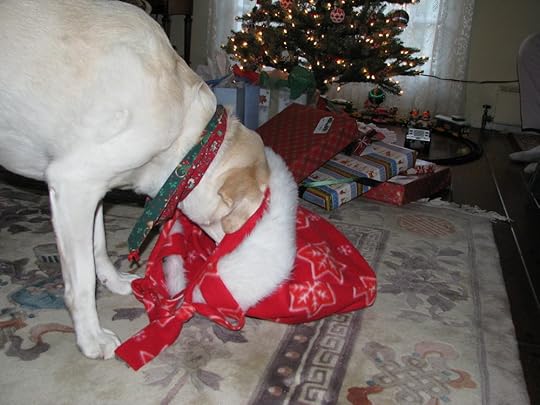
Christmas decorations create a beautiful and an almost magical display in our homes. For us humans these pretty ornaments and plants are understood to be just that - decorations. However, our pets are often fascinated with these new "toys" that seem to them to offer fun, play, and even a treat to munch on. Please take great care and protect your precious dogs, cats, and other pets!
Christmas trees need to be secured so they can't topple over if our pets try to jump on or climb. Fast moving dogs can upside down an unsteady tree in a heart beat. Locate the tree where it is safe from exploring critters who are curious about an outdoor tree moving inside! Friends of mine placed their tree in their enclosed porch with glass doors. The humans get to enjoy it without worrying about their pets toppling their tree or, much worse, their beloved pet getting dangerously hurt.
I knew that eating tinsel and various ornaments can cause intestinal blockages, but I never gave much thought to the needles of the real or artificial tree. They can perforate the intestines' wall and cause life-threatening leakages and infections. This is another big reason to locate our trees out of reach of our beloved pets.
Popcorn balls or strings are yummy temptations and can cause our pets to tug at the tree and destroy our lovely evergreen. Remember that mistletoe, holly, and poinsettia plants are toxic and will poison our loving, four-legged family members
Electrical lights and cords can electrocute and kill when chewed on or strangle when played with and our pets get wrapped up. Secure all wires
Fires in the fireplace are cozy but please protect your pet from getting burned by placing a sturdy fire screen. One of my pups loves the warmth so much that she gets much too close. Her tail could easily go up in flames if a safe barrier were not there to keep her out of harm's way. This applies to burning candles as well. Keep them up and away from your pets and the possibility of getting knocked over. A friend's apartment went up in smoke quite literally from a candle being knocked over by a wagging tail.
A good rule of thumb is to think first and use only decorations that we are absolutely positive will not become a potential danger to our pets. Err on the side of caution every time. I would rather have a safe and happy holiday than one spent in the veterinarian's hospital.
God bless you all and have a blessed, peace-filled holiday. Thank You
December 15, 2018
Holiday Safety Thought #1 for our Pets
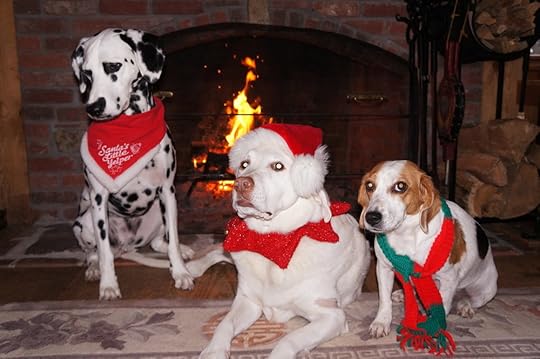
The beautiful season of Christmas, Hanukkah and New Year is here and our pets join in many of the festivities. As we approach the merriment, we must keep foremost in our minds the protection and safety of our loving, four-legged family members.
Perhaps first, we should consider whether or not the gift of a new pet is a wise choice. New pets do NOT necessarily make good holiday gifts and adding a new pet requires a huge commitment and responsibility beyond the holiday season. However, if you are truly thinking of getting a new dog or cat and have given it a great deal of careful thought and consideration, think about adopting a homeless pet who would benefit from your love and safekeeping. There are many rescue organizations, animal shelters, and humane societies with breeds of every type and of all age groups. Our physically challenged and older furry friends who have been abandoned under a myriad of circumstances are yearning for our love and embrace and can truly benefit from your open arms.
Please think long and hard before adopting a new pet during this holiday season. Let good reason rule the excitement of the heart.
Holiday Tips
Shoreline Animal Hospital’s Pet Holiday Safety Tips
The veterinarians at Shoreline Animal Hospital, Dr. Julie Berman, Dr.Michelle West, and Dr. Lynda Perry want to wish all pet owners in Clinton safe and happy holidays. To help ensure the holidays are safe for all pets, they are sharing holiday safety tips to prevent serious illness or injury.
Oh, Christmas Tree: Securely anchor your Christmas tree to prevent tipping from curious feline family members. If you have a live tree, securing your tree will keep stagnant water from spilling, that could contain fertilizers and bacteria. Wrapped gifts under the tree, such as boxes of chocolate could also be dangerous if Fido follows his nose and opens them on his own, so keep them out of reach until after Santa comes.
Sparkly Tinsel: Kitties can find tinsel and ribbons irresistible to play with and carry in their mouths. Ingestion can lead to bowel obstruction, severe vomiting, dehydration,and could require surgery.
Holiday Treats: Your holiday guests might want to slip treats to your pets, and holiday leftovers might be tempting for Rover to steal. Fatty and spicy foods, bones,raw bread dough, alcoholic beverages, onions/ garlic, chocolate, and grapes are on the please do not feed list! A well-intended treat could trigger GI upset, diarrhea or pancreatitis. Sugar free sweets could contain xylitol that can be lethal to pets. If your guests want to give some extra attention to your pets they can provide a walk or some extra cuddle time.
Nostalgic Snow Globes: Snow globes may contain ethylene glycol, (also found in anti-freeze) which is a highly toxic substance if ingested. If a snow globe is broken the sweet smell can attract a pet to lick it up, leading to potentially fatal intoxication. Please keep all snow globes out of reach of pets.
Open Suitcases: Family pets often like to investigate your visitors’ suitcases. Pets can get into pill vials and weekly pill reminder cases. Please remind your guests to secure all medications in a cabinet and to close their suitcases!
New Year’s Celebrations: New Year’s Eve noises from poppers to fireworks can be terrifying for pets. Please be sure to provide your pets an escape proof area that is quiet with fresh water and places to snuggle as midnight approaches
November 23, 2018
Dehydration in our Dogs
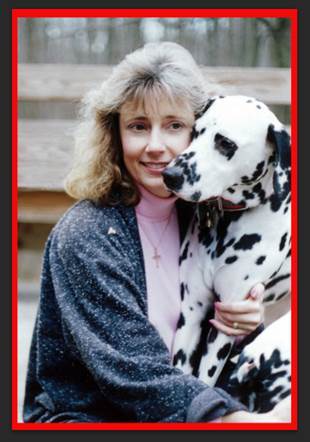
What Is Dehydration?
Most of us know that dehydration occurs when the body loses more fluid than it's taking in. When we get really thirsty, especially after a long, hot day or a tough workout, we can tell our bodies are dehydrated. Our mouths are dry. We crave water. Some of us get headaches, and many of us, unfortunately, grow irritable.
Dehydration, however, can have more serious effects on our bodies than simply making us unpleasant to be around.
All mammals rely on water to keep their bodies functioning, and dogs are no exception. Water plays a huge role in your dog's body. The short list of water's functions includes lubricating joints, helping regulate body temperature, transporting nutrients, flushing waste, and more. The long list could fill a medical textbook.
Normally, water is lost and gained throughout the day. Panting, breathing, urinating, defecating, and evaporation through the paws all contribute to normal water loss, which your dog compensates for by eating and drinking.
When your dog's body passes the point where normal activities can make up for the water loss, fluid shifts out of your dog's body cells to help the body quench its thirst. This results in a loss of electrolytes, such as sodium, chloride, and potassium. Since these electrolytes are important for muscle function, not to mention many other body processes, your dog's body starts to suffer. In serious cases, dehydration can even lead to kidney and other organ failure, and death.
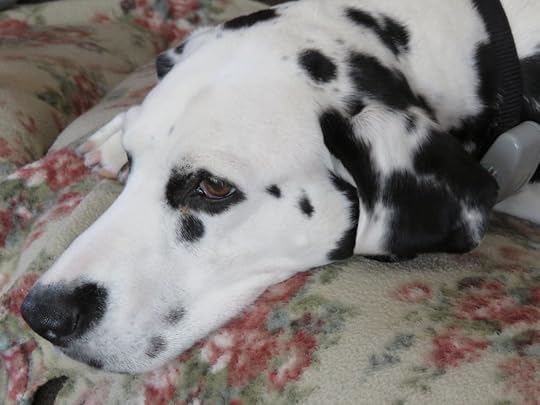
Symptoms of Dehydration in Dogs
So how can you tell if your dog is dehydrated?
Knowing the symptoms of dehydration in humans is something we take for granted when diagnosing ourselves, but most owners do not know the signs of dehydration in dogs.
This is unfortunate, since knowing the signs of dehydration can help you catch a serious medical condition before it gets out of control.
Here are some of the common symptoms to get you started:
Loss of appetite
Reduced energy levels and/or lethargy
Panting
Sunken, dry-looking eyes
Dry nose and gums
Loss of skin elasticity
Some of these are obvious to the naked eye, but others, like skin elasticity, require a simple test.
To test for dehydration in dogs, gently pinch their skin between your thumb and forefinger. In well-hydrated dogs, the skin will spring back to its original position. The skin of dehydrated dogs, on the other hand, will take longer to fall back into place.
It is a good idea to test your dog's skin when you are sure your dog is well hydrated, so that you have a base for what normal skin elasticity for your dog feels like. This is especially important for owners of wrinkly breeds, such as Bulldogs or Neapolitan Mastiffs, because their wrinkly skin might be misleading.
You can also test your dog's gums for dehydration. Dogs' gums are normally nice and moist, and in some cases, positively slimy. Dry, tacky-feeling gums, on the other hand, are a symptom of dehydration. If you've ever experienced a dry mouth as a side effect of a medication, then you have an idea of what this feels like.
As you are feeling your dog's gums, you can also test for capillary refill time. Press your finger gently against your dog's gums, and then remove your finger. In hydrated dogs, the area where you pressed will appear white for a second, and then return to its normal pink color almost immediately. In dehydrated dogs, the capillary refill time takes much longer.
Causes of Dehydration in Dogs
Dehydration can be caused by lack of water, but it is often a symptom of an underlying cause.
The first thing you should do if you suspect your pet is dehydrated is check to make sure he's had access to plenty of fresh, clean water all day. Sometimes, our pets' water bowls run dry, despite our best intentions, and this can be problematic on particularly hot days. In a vicious cycle, dehydrated dogs can lose their appetites, which causes them to eat less, and therefore eliminates the water content they would normally get from their food, too.
1) If your dog is not eating, or vomiting with or without diarrhea, suspect your dog is dehydrated and seek veterinary attention.
Dehydration is a common symptom associated with serious diseases, such as kidney disease, heat stroke, cancer, diabetes, and any disease that causes vomiting, diarrhea, or fever.
Your dog's body loses water and electrolytes when he is sick, due to fever, vomiting, diarrhea, loss of appetite, and other processes. This is why veterinarians often give sick pets fluids to keep them hydrated while they recover.
Very young dogs, senior dogs, nursing mothers, and toy dog breeds may be at an increased risk of dehydration, so be sure you know the signs of dehydration in dogs if your dog falls into one of these categories.
Treating Dehydration in DogsIt might seem like offering your dog a bowl of water is enough to restore her water balance, but this only applies to very mild cases of dehydration.
2) If your dog is dehydrated for a medical reason, like diarrhea, bloody diarrhea, or heat stroke, you need to take her to the veterinarian. These are considered veterinarian emergencies. Dehydration makes it harder for your pet to recover, increasing her risks of suffering damaging or possibly fatal consequences.
Water is not the only thing dehydrated dogs lose. Those electrolytes also need to be replaced, and water alone will not get the job done. Your veterinarian may recommend giving your dog fluids to help balance her systems, and you may need to return to your veterinarian's office a few times for more fluids while your dog recovers.
Dehydration is often a symptom of a larger problem, so in addition to fluids, your veterinarian will want to diagnose and treat the underlying condition. This process will depend on your dog's other symptoms, and could involve anything from blood work and radiographs to surgery.
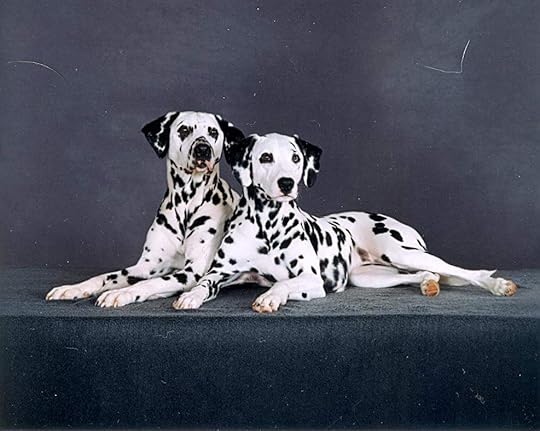
Preventing Dehydration in Dogs
The best way that you can prevent dehydration in your dog is to provide him with a constant supply of fresh, clean water. Like people, some dogs drink more than others, so you may need to take extra care to make sure picky drinkers get enough water. Your veterinarian can offer you advice about how best to ensure your dog consumes enough fluids, based on his age and condition.
We can't always prevent our dogs from getting sick, beyond keeping them up-to-date on their vaccines, and providing them with a healthy diet and exercise. But knowing the signs of dehydration can help us catch it before it becomes dangerous. Dehydration can also serve as a warning sign that something else is going on with your dog, helping to catch dangerous diseases and conditions before they get out-of-hand.
For more information about the signs of dehydration in dogs, or if you suspect that your dog might be dehydrated, contact your veterinarian.
September 27, 2018
Hogan's Hope visits iCRV Radio

I would be greatly remiss if I didn't take a moment to thank everyone at iCRV Radio in Ivoryton, Connecticut, for providing me the wonderful and outstanding opportunity to visit with LRB and Gwen today on their program, Library Chat. They brought Hogan's Hope to the CT River Valley and beyond! I had listeners from upper New York, Pennsylvania, Delaware, and Florida contact me to tell me what a great program it was. (Co-host Kate was sorely missed!) These amazing women bring extraordinary programming that is personal, interesting, pertinent, and appealing to their listeners. Their amazing talents make it seem as if they are sitting right there at the coffee table with their audience chatting as long-time friends.
Library Chat helped promote that this week is Deaf Dog Awareness week and that the Chester Public Library is hosting a presentation for children on Saturday, September 29th at 10:30 AM. The program will educate these young folks on living with a deaf dog but, more importantly, will help them learn the lesson that everyone is worthy of love and acceptance. The message communicates that, with hope, anything is possible!
Thank you for continually caring about quality living and providing a positive, upbeat, and important conversation that may make the difference in someone's life.
September 25, 2018
Tips for Living with a Deaf Dog
The last full week of September is designated as Deaf Dog Awareness Week. Our wonderful deaf dogs make loving family members when they are understood and simple adaptations are made. Remember, this is not unlike making adjustments for our non-hearing humans.
I have included ten tips that are beginning steps to helping any family or individual develop a happy and successful life with a hearing-challenged dog. It’s worth the love!
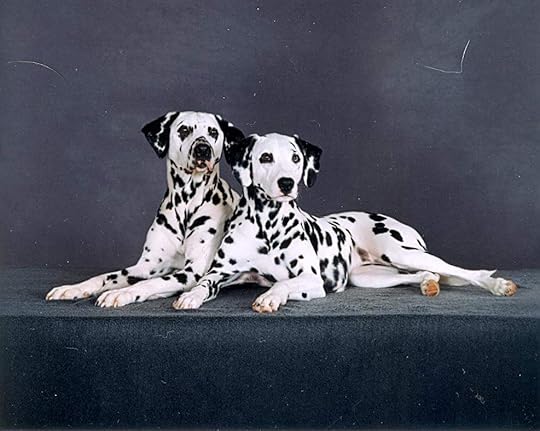
Hogan and Georgia, deaf Dalmatians
Ten Important Tips
Our deaf animals can be wonderful and loving members of our families if we remember they have some special needs. Adopting them, like any pet, is a real responsibility and commitment.
1. Learn to communicate with them their way. American Sign Language (ASL) is great because it allows many others to communicate with our deaf pups.
2. Always let them know when you are nearby. Like any dog, we need to not startle them. The expression, "Let a sleeping dog lie," didn't come about because of deaf dogs, but any dog.
3. Approach them slowly from the front where they can see you. It is always best to approach our dogs, whether they hear us or not, in a manner that they know that we are present.
4. Always be gentle with touch and gesture. Our love needs to be shown in every way. Massage is also a great way to establish closeness and trust.
5. Use only praise, encouraging touch, and positive reinforcement. And lots of it! Our pups love to please us and the more wonderful feedback that we give, the happier they are.
6. Allow them to approach a newcomer first by smelling the person's fist. Never let a stranger or anyone rush to them.
7. Keep them on leashes and close to you when out on walks.
8. Tether them to you in the house to help with initial adjustment, housebreaking, bonding, and helping them feel safe. My deaf pups were nicknamed. “Velcro dogs.” There is no better feeling than having a devoted and loving dog by our side.
9. Provide outdoor fencing that is secure and essential for their safety. They can't hear dangers. We need to remember that all pets need to be kept safe, and it's our responsibility to keep them safe.
10. Work with them in an established and continual training program. Our pets are adopted members of our families, and daily attention is "a non-negotiable." Learning is continuous throughout their entire lives.
** Love and accept them with their special needs. **
September 24, 2018
Deaf Dog Awareness Week
2018 Deaf Dog Awareness Week is the last full week of September which begins on the 24th and ends on the 30th.
Reports site deafness in some breeds of dogs as high as 40 percent. Deafness in dogs used to mean an automatic death sentence, but more deaf canines are being rescued and becoming wonderful family members.
When I attend dog events to sign and sell my book, Hogan’s Hope, I often have visitors who come to my table comment that they have or have had a deaf dog. And, if they don’t have a deaf dog of their own, they often tell stories of friends or other family members who have had deaf pups as part of their families. These numbers don’t include the ones who didn’t realize that their furry family member was hearing impaired at some level.
I have been blessed with three of these amazing, smart, fun, loving … as adopted members of our family. Having worked with Hogan beginning in 1993 when there were no resources for training deaf dogs, I am the first one to admit that deaf dogs have special needs. However, they can be loving and devoted companions with some very simple adaptations. We make adaptations for a hearing impaired human, so why not our precious animals?
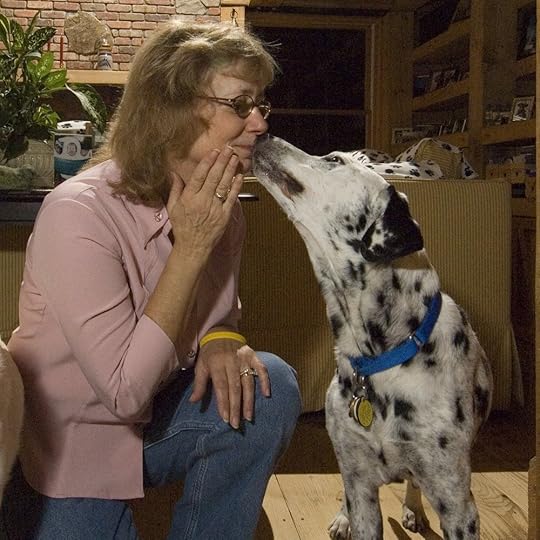
Hogan loved to respond to the sign for “Kiss.”
Responding to folks who inquire, “How do I get started?”
Hello!
I am so very glad to hear from you. There is so much to say about loving and living with a deaf pup that I can only begin here. What I know for absolute certainty is that I would not trade my life with my deaf pups for anything in the world!
The best advice I can give anyone with a deaf pup, child, friend, or relative is to establish a solid method of communication. Communication is the key to success. I didn’t know American Sign Language (ASL) prior to adopting my Hogan so my husband purchased a pocket-sized book for me to use. I decided to use ASL because I know many folks who know at least a bit of sign. I didn’t have to “reinvent the wheel” so to speak. Additionally, when I had to leave my pups with a sitter or the vet, I merely had to give them the handbook or copies of the most important signs that I use. This made it possible for many other people to “talk” with my pups without a great deal of instruction which could be vital in sudden situations! Most importantly, my pups were never left in a totally "silent" environment; someone could always talk to them.
I also adopted a deaf female Dalmatian named Georgia; and both Hogan, Georgia, and my hearing black lab, India, understood many signs and short sentences. They understood over 75 signs and I used many more in talking with them. It was wonderful. They loved my signing to them, and folks could actually see them watching my hands and face for messages. They became very intent.
I started through simple repetition. "Sit" is great to start along with "cookie." Once your pup puts together cookie and the reward, you will be off and running! Keep it simple and always use a sign for what you want.
Deaf pups are smart and they are very capable of learning. Because dogs are physical in nature, they naturally watch for signals and body language.
I even taught them the sign for "car" since they loved to ride in the car. When I told them that we were embarking on a road trip, they ran for the door. "Kiss" was fun and going for a "walk" met with joy-filled approval. "Potty" (I used the sign for toilet which is simply the letter "T") is great. I signed it every time I took them out to go potty, and they knew I meant business, especially if it was late and I wanted to go to "bed."
Repetition was how I trained my pups to understand any of the signs. Instead of using the spoken word, I simply used the sign for the word and followed it with having them do what I wanted or needed them to do.
Always be gentle, patient, and very positive.
Reward, never punish. The more you reward, the more the pup will respond. I did all my training with positive reward and reinforcement.
Socialization is also extremely important and must never stop. It must be continuous. Let others give treats which will make meeting other people a wonderful experience for your pup.
Desensitization to scary situations, such as being startled or awakened suddenly, is also critical and needs to be done slowly, carefully, and patiently.
Praise is crucial; touch is essential; and massage works wonders.
AND . . . remember that a tired dog is a good dog!
Our deaf animals can be wonderful and loving members of our families if we remember they have some special needs.
August 18, 2018
When I Am Old
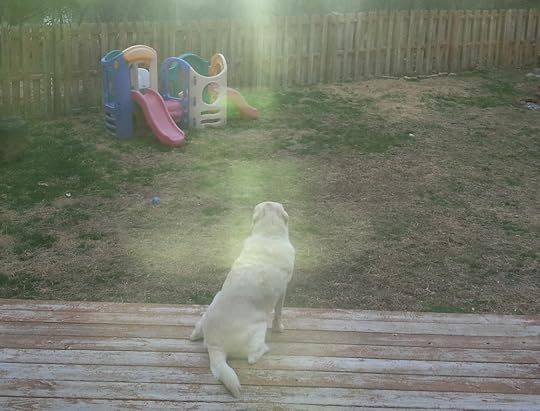
God shines down on our Clarence during his last days with us.
I received this from a friend... it's just lovely XO.
When I am old...
I will wear soft gray sweatshirts...
and a bandana over my silver hair...
and I will spend my social security checks on my dogs.
I will sit in my house on my well-worn chair
and listen to my dogs breathing.
I will sneak out in the middle of a warm summer night
and take my dogs for a run, if my old bones will allow...
When people come to call, I will smile and nod
as I show them my dogs...
and talk of them and about them...
...the ones so beloved of the past
and the ones so beloved of today...
I will still work hard cleaning after them,
mopping and feeding them and whispering their names
in a soft loving way.
I will wear the gleaming sweat on my throat,
like a jewel, and I will be an embarrassment to all...
especially my family...
who have not yet found the peace in being free
to have dogs as your best friends...
These friends who always wait, at any hour, for your footfall...
and eagerly jump to their feet out of a sound sleep,
to greet you as if you are a God,
with warm eyes full of adoring love and hope
that you will always stay,
I'll hug their big strong necks...
I'll kiss their dear sweet heads...
and whisper in their very special company....
I look in the mirror... and see I am getting old....
this is the kind of person I am...
and have always been.
Loving dogs is easy, they are part of me.
Please accept me for who I am.
My dogs appreciate my presence in their lives...
they love my presence in their lives...
When I am old this will be important to me...
you will understand when you are old,
if you have dogs to love too.
-Author Unknown
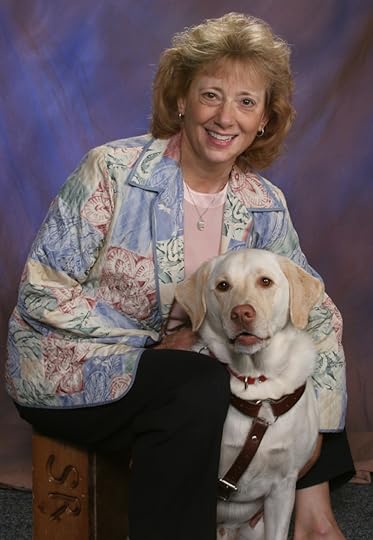
August 15, 2018
My Dog Has Eaten Something Toxic. Now What?

Induce Vomiting
While it's not a fun thing to do, we could save our pup's life if we know how.
As a family, we are extremely cautious in our home about keeping dangerous items away from our pups, but even we just had a scary event with our precious Judea. A bag of chocolates got let on the sofa by accident, and before we realized it, Judea had gobbled done the sweet treats. We had to take immediate, fast action to ensure her well being.
Getting our dogs to vomit isn't a pleasant thought but it might be a life-saving procedure. And, there are three potentially life-saving steps we should all follow.
First Step: Get our dog to vomit
As soon as it's discovered that our pup has eaten something harmful, administer 3% hydrogen peroxide. Give one teaspoon for every ten pounds of weight. Administer with a medicinal syringe, measuring carefully. Use an eye dropper if necessary.Place the syringe or eye dropper in the corner of the cheek and slowly release the liquid into the cheek pocket.DO NOT INDUCE VOMITING IF THE OBTAIN IS SHARP, BLEACH, DRAIN CLEANER, OR PETROLEUM PRODUCTS SUCH AS GASOLINE.Call the veterinarian.Walk our dog around which will help the stomach feel more like vomiting.Move our pup to an area that is easy to clean up., get veterinary care, and follow general guidelines on inducing vomiting.Sometimes giving a little bit of canned dog food will help bring on vomiting with the peroxide.If there is no vomiting after ten minutes or so, give another dose. Most veterinarians don't recommend a third dose.Second Step:
Take our precious pup to the veterinarian or emergency clinic.Let them examine and do a thorough assessment.Follow their directions carefully.Do not hesitate in getting to the vet's office, especially if the dog did not vomit.Take some of the vomit with you. If you can't get the vomit, take a picture of it with your cell phone or camera to show the doctor.Third Step:
Food moves from the dog's stomach and into the intestines after approximately two hours. Do not induce vomiting if two hours have passed since the ingestion of things such as chocolate, raisins, grapes, Tylenol, aspirin, antifreeze.DO NOT use ipecac or salt to induce vomiting. Be aware of the medical condition of our pup.If our pup looks extremely ill or doesn't respond, DO NOT induce vomiting. Get the dog to the emergency clinic or veterinarian as fast as possible. Symptoms can include looking depressed, having seizures, slow heart rate, hard time breathing, and worst of all being unconscious.Summertime brings out all sorts of treats and sweets along with garden supplies and potentially dangerous chemicals, fertilizers, and liquids. Be sure to take extra precautions to keep our wonderful, furry family members safe—just like we would with our 2-legged toddlers.
